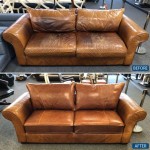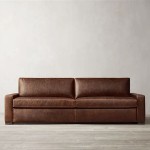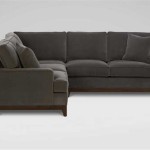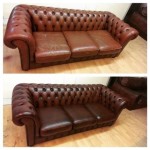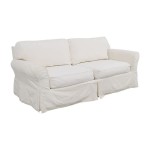How to Sew Sofa Back Cushions
Sofa back cushions are integral to both the comfort and aesthetic appeal of a sofa. Over time, these cushions can become worn, flattened, or simply outdated. Sewing new sofa back cushions is a cost-effective and customizable way to revitalize furniture. This article provides a comprehensive guide to creating professional-looking sofa back cushions, covering fabric selection, measuring, cutting, and sewing techniques.
Choosing the Right Fabric and Supplies
The selection of appropriate fabric and supplies is crucial for the longevity and appearance of the finished cushions. The choice depends largely on the intended use, desired aesthetic, and durability requirements.
For frequently used sofas, durable and stain-resistant fabrics are recommended. Options such as upholstery-grade cotton blends, linen blends, or synthetic fabrics like polyester and acrylic offer a good balance of durability and comfort. These fabrics are typically woven tightly, making them resistant to wear and tear. Consider performance fabrics that are specifically treated to repel liquids and resist fading.
For sofas in less frequently used areas or for a more luxurious feel, delicate fabrics like velvet, silk, or brocade can be considered. However, these fabrics require more careful handling and may not be as resistant to everyday wear and tear. It is also important to consider the care instructions for these more delicate fabrics, as some may require professional cleaning.
The filling material significantly impacts the comfort and shape of the cushions. Common options include:
Polyester Fiberfill: This is a budget-friendly and readily available option. It is lightweight and provides a soft, plush feel. However, polyester fiberfill can flatten over time with repeated use. High-loft polyester fiberfill is generally preferred for sofa back cushions to provide more support and resilience.
Foam: Foam provides a firmer, more structured feel compared to fiberfill. Different densities of foam are available, ranging from soft to very firm. High-density foam is recommended for sofa back cushions as it offers better support and retains its shape longer. Foam can be cut to size and shape, providing a more tailored look.
Down and Feathers: These natural materials offer a luxurious and comfortable feel. Down and feather cushions are very soft and conforming. However, they require regular fluffing to maintain their shape, and they may not be suitable for individuals with allergies.
Combination Fills: Some cushions use a combination of materials, such as a foam core wrapped in polyester fiberfill or a blend of down and feathers. This approach can offer a balance of support and comfort.
In addition to fabric and filling, the following supplies are necessary:
- Measuring tape
- Scissors or rotary cutter
- Seam ripper (for deconstructing old cushions)
- Pins
- Sewing machine
- Matching thread
- Zipper (optional, for removable covers)
- Invisible zipper foot (if using invisible zippers)
- Piping cord (optional, for decorative edges)
- Piping foot (if using piping cord)
- Fabric marker or tailor's chalk
- Large paper or cardboard for creating patterns
Measuring and Cutting the Fabric
Accurate measuring and cutting are essential for creating well-fitting sofa back cushions. Begin by measuring the existing cushions (if replacing) or the sofa back to determine the desired size and shape. If the existing cushions are misshapen or worn, take measurements at multiple points to ensure accuracy.
For rectangular or square cushions, measure the length, width, and thickness. For cushions with curved or rounded edges, create a template by tracing the shape onto a large piece of paper or cardboard. Add seam allowances to all measurements. A standard seam allowance of 1/2 inch is sufficient for most fabrics. If using a thicker fabric or if a more generous seam allowance is desired, increase it to 5/8 inch or 3/4 inch.
When cutting the fabric, lay it flat on a large, clean surface. Use pattern weights or pins to secure the pattern pieces to the fabric. Carefully cut around the pattern pieces, ensuring that the fabric remains smooth and aligned. If cutting multiple layers of fabric, use a rotary cutter and a cutting mat for greater accuracy. Label each fabric piece with its corresponding pattern piece to avoid confusion during the sewing process.
If incorporating a zipper closure, measure the length of the cushion edge where the zipper will be installed. Purchase a zipper that is slightly longer than this measurement. Invisible zippers provide a cleaner, more professional look, but they require a special invisible zipper foot for installation.
For cushions with piping, measure the perimeter of the cushion and add a few inches to account for any variations. Pre-made piping cord is available in a variety of colors and sizes. To create custom piping, cut strips of fabric on the bias (at a 45-degree angle to the grain) to provide flexibility around curves. The width of the fabric strips should be approximately twice the width of the piping cord plus the seam allowance.
Sewing Techniques and Construction
The sewing process involves assembling the fabric pieces, inserting the zipper (if applicable), adding piping (if desired), and stuffing the cushion with filling.
Start by sewing the zipper into the designated cushion edge. If using an invisible zipper, follow the instructions provided with the zipper and the invisible zipper foot. Align the zipper teeth with the edge of the fabric and stitch close to the teeth. Once the zipper is installed, test it to ensure that it opens and closes smoothly.
If adding piping, attach it to the right side of the cushion front, aligning the raw edges of the piping fabric with the raw edge of the cushion front. Use a piping foot to stitch close to the piping cord. Clip the seam allowance around any curves to allow the piping to lie flat. Repeat this process for all edges where piping is desired.
Next, pin the front and back cushion pieces together, right sides facing. Stitch around the perimeter of the cushion, leaving an opening for stuffing. If a zipper is not being used, leave a larger opening to facilitate stuffing. Reinforce the corners of the cushion by backstitching at the beginning and end of each seam.
Turn the cushion cover right side out and carefully push out the corners. Stuff the cushion with the chosen filling material. Distribute the filling evenly to avoid lumps or sagging. For foam cushions, carefully insert the foam insert into the cover. For fiberfill cushions, gradually add the fiberfill until the desired firmness is achieved.
Once the cushion is fully stuffed, close the opening with a blind stitch or a machine stitch. A blind stitch creates an invisible seam, providing a professional finish. For machine stitching, fold the raw edges of the opening inward and stitch close to the folded edge.
To ensure that the cushions maintain their shape and prevent shifting of the filling, consider adding tufting. Tufting involves sewing through the cushion at regular intervals to create a series of indentations. This can be done by hand or with a sewing machine using a long needle. Buttons can be added to the tufted areas for a decorative touch.
Regularly inspect the seams and zipper (if applicable) for any signs of wear or damage. Repair any tears or loose seams promptly to prevent further damage. Periodically fluff the cushions to maintain their shape and prevent flattening of the filling material.

Tutorial Diy Upholstery Sofa Rehab A Jennuine Life

How To Plump Your Sofa Cushions

How To Make A Couch Slipcover Part 1

How To Fix Sagging Couch Cushions Thistlewood Farm

How To Sew A Sofa Pad For Extra Cushion

Diy Couch How To Build And Upholster Your Own Sofa

How To Stuff Saggy Couch Cushions Under 50 Thetarnishedjewelblog

How To Fix Sagging Couch Cushions Thistlewood Farm

How To Reupholster A Couch Taking Boring Brown Sectional From Basic Beautiful

Diy Couch How To Build And Upholster Your Own Sofa
Related Posts

